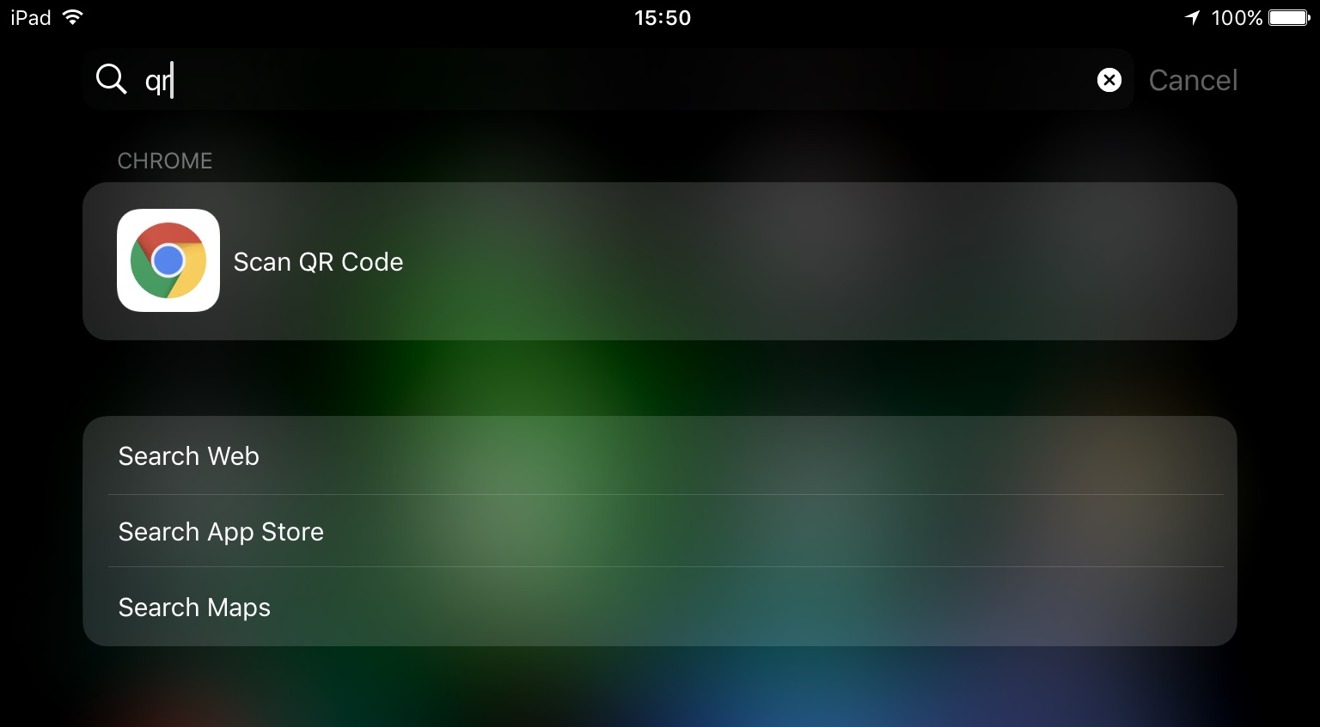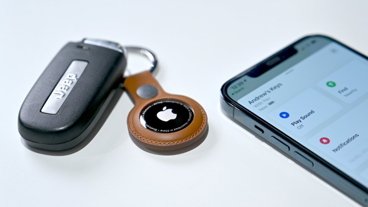Google adds QR code scanner to 3D Touch menu in iOS Chrome 56 update
The latest update to the Chrome browser on iOS is providing iPhone users with the ability to scan and search QR codes using 3D Touch, while those browsing on the iPad will benefit from a redesigned tab switcher.
Triggering the 3D Touch menu from the Chrome Home Screen icon on an iPhone 6s or iPhone 7 presents the option to "Scan QR Code" with the browser. The same function can also be brought up on the iPad and older iPhones that do not have 3D Touch support, accessible by searching for "QR" in iOS Spotlight.
When invoked, Chrome uses the rear camera of the iPhone, showing a highlighted square in the middle of the frame that the user should line up the QR code within. The same function can be used for scanning barcodes on product packaging, which can then be used to search for the item online.
QR codes are being used more as a form of marketing, with advertisements displaying the square barcode as a means to take potential customers to promotional websites on their mobile devices. While there are QR and barcode scanning apps available, the addition of the function to Chrome itself potentially shortens the number of steps needed to use the information embedded within the QR code.
On iPad, the Chrome tab switcher is brought up by a collection of four squares in the top right corner of the screen. The switcher shows all the currently open tabs within the iPad browser, including Incognito Tabs, as well as displaying tabs recently viewed on other devices associated with the currently-used Google account.
Future updates for the iPhone and iPad browser are likely to arrive at a faster pace, as Google recently made the iOS app open source and incorporated it into the Chromium project. Code for the iOS app is now in the open-source repository, allowing anyone to download and compile it for themselves, while testing app update submissions will be automated whenever new code is checked in, further speeding up development.
The updates to the iOS app arrive a few days after Chrome 56 was released for macOS. The latest version of the desktop browser is claimed to process page reloads 28 percent faster, enables HTML5 by default, warns users if they are not using HTTPS on a site when dealing with sensitive data, and includes built-in FLAC support.
 Malcolm Owen
Malcolm Owen












 Andrew Orr
Andrew Orr


 William Gallagher
William Gallagher

 Mike Wuerthele
Mike Wuerthele
 Christine McKee
Christine McKee








